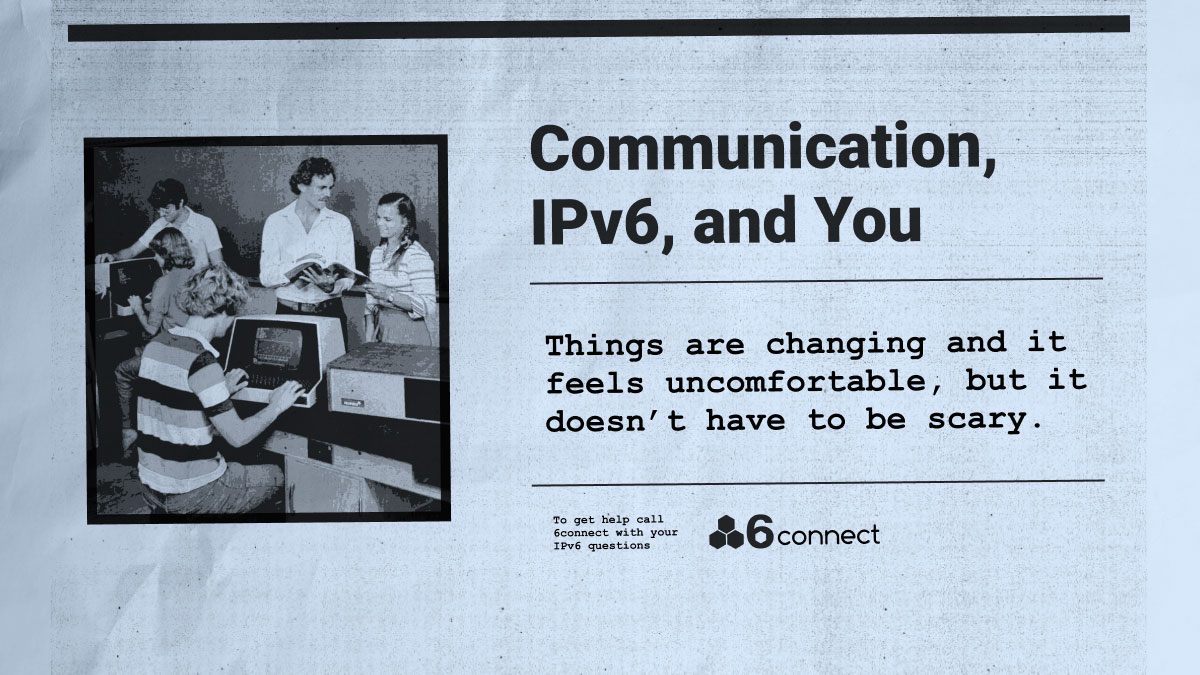
To find out, tune into IPv6 Buzz podcast episode #45, “Fine-Tuning IPv6 Adoption Strategies for Service Providers and Enterprises.” Our own co-founder and COO, Pete Sclafani, was a featured guest on the episode, speaking with hosts Ed Horley and Tom Coffeen about a multitude of issues surrounding IPv6 – including why people seem to shy away from it, and how to change that.
There’s certainly much to consider when it comes to IPv6 adoption strategy! Let’s take a look at a few of the issues discussed on the show.
Top 3 Objections to IPv6
“Unfortunately, the objections to IPv6 are still alive and well,” notes Pete at the start of the episode. In his experience, there are three main factors impeding wider adoption: a (very normal) fear of change that leads to hesitation and wariness; revenue risk, which inevitably involves a “dicey discussion that goes beyond the network team”; and knowledge gaps, or what he refers to as the blindspot.
A major challenge is figuring out how to communicate effectively in order to overcome these common objections. For instance, “What happens if you present an idea that’s really unique or really useful, and the other person doesn’t know anything about it?” Pete asks. “Or they don’t want to seem like they don’t know because they’re in a position of authority in your organization – how do you kind of navigate that?”
Although IPv6 is a technical change, it’s different enough from IPv4 to require a certain amount of cultural change within organizations, so selling higher-ups on the concept requires some skill and sensitivity.
Tackling IPv6 Communication
Interestingly, a recent study has found that people tend to tune out when presented with complex, jargon-filled language in both science and politics. That’s a pretty understandable phenomenon, of course – but there’s an even darker side to it. Researchers found that jargon actually led people to not believe the science behind technology like 3D bio-printing.
“When you have a difficult time processing the jargon, you start to counter-argue. You don’t like what you’re reading,” explains Hillary Shulman, lead author of the study. “But when it is easier to read, you are more persuaded and you’re more likely to support these technologies.”
Even when definitions of terms were available to them, study participants who were exposed to high-jargon texts experienced difficulty reading and reported things like, “I’m not really good at science,” “I’m not interested in learning about science,” and “I’m not well qualified to participate in science discussions.” The opposite was true for those who read no-jargon versions of the same text.
This difference is astounding. We can extrapolate that people respond the same way to jargon in conversation as well – which in turn sheds some light on the challenge of communicating the importance of IPv6 to business leaders who may not always be very tech-savvy.
As Ed observes, “It’s very hard to have that conversation if they don’t have the knowledge to understand what [they’re] missing out on.” But oftentimes business leaders are keenly aware of their need for assistance, saying things like, “We don’t know what to do here, we need someone with good guidance, good guardrails for us, good base principles, and maybe some good tools and solutions to help us navigate [this] minefield.”
Filling these gaps must be undertaken with an eye toward reaching people where they are. Modifying language to minimize jargon can make a huge difference in both receptiveness and persuadability, as the study suggests. Adapting to your audience and focusing on clear communication can thus help elicit a positive response that translates to a much more productive discussion.
IPv6 Adoption: Elements to consider
A large portion of the episode covers what you should consider when strategizing about IPv6 adoption within an organization. As Pete explains, service providers and enterprises have different perspectives and motivations within different markets. To be effective, a value proposition must take these factors into account and answer the inevitable question, “Why are we having this conversation?”
The education process entails presenting the advantages of IPv6 adoption and, in particular, how these outweigh the temporary disruption to operations and to revenue. For instance, mapping an IPv6 migration plan is an opportunity for transformation within both business and operations processes. There’s a chance to stop and think, “OK, how do I utilize IPv6 effectively going forward, but then how do I not reintroduce the same problems and limitations that I ran into with IPv4?” Certain attitudes and behaviors may be held over from working with v4 for so long, as well, which have to be dealt with mindfully, like the lingering paranoia of running out of IP space!
It’s important to note that a v6 project can spark much-needed tooling changes in service delivery and automation within an organization – and the benefits of IPv6 as a greenfield network design opportunity cannot be overstated.
Pete, Ed, and Tom discuss all of these topics and more, looking at IPv6 adoption strategy at home with an eye toward global trends. Check out the podcast episode for in-depth insights on how to effectively communicate the importance of IPv6 for service providers and enterprises.
Interested in learning more? See our previous posts on how to plan for and deploy IPv6 in your organization, and the top five concerns of network admins about migrating to IPv6!







